What is plunge-cutting? |
||||
 |
||||
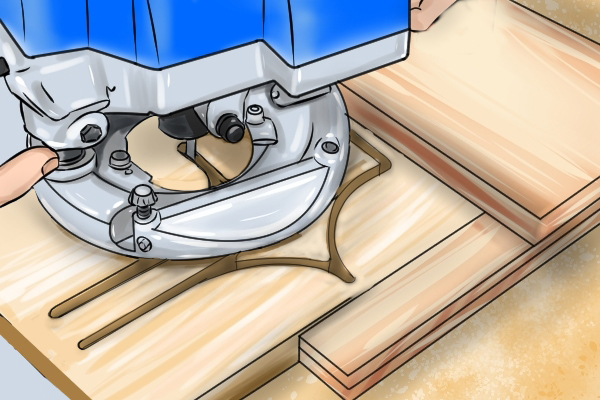 |
Plunge cutting is cutting into the surface of a material from above, as opposed to starting at the side or cutting along the edge.
Plunge-cutting should only be done with a plunge router and router bits with bottom cut facilities. |
|||
How to identify a plunge-cutting bit |
||||
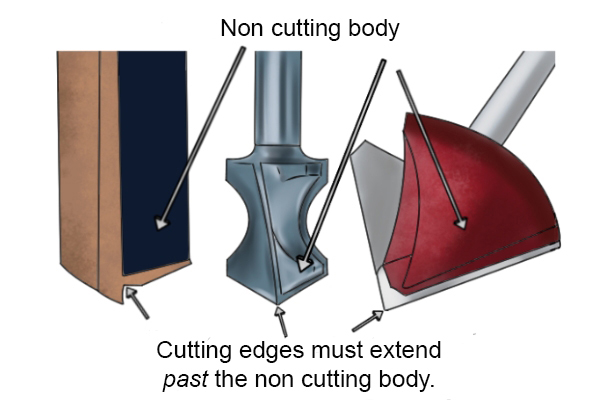 |
Quite simply, in order for a bit to be able to plunge-cut, the cutting edges must extend past the non-cutting body of the router bit. These edges should only extend a few millimetres past the end of the body. Too much clearance can result in them breaking off in the material.
Most bits that can plunge-cut will be identified on their packaging. However, there are some other features that characterise them: |
|||
A plunge-cutting tip |
||||
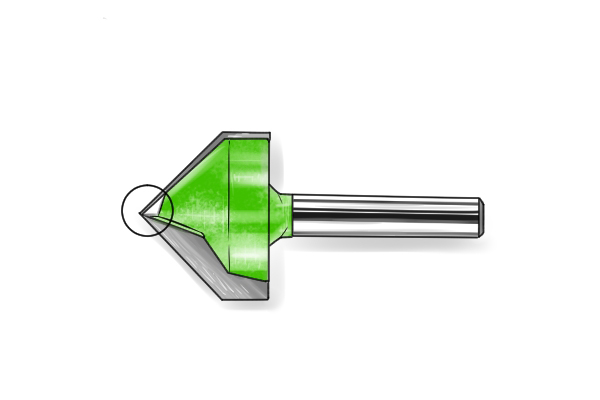 |
This is basically a pointed and very sharp tip located at the base of the body, which is able to pierce the material, cutting into it from above. |
|||
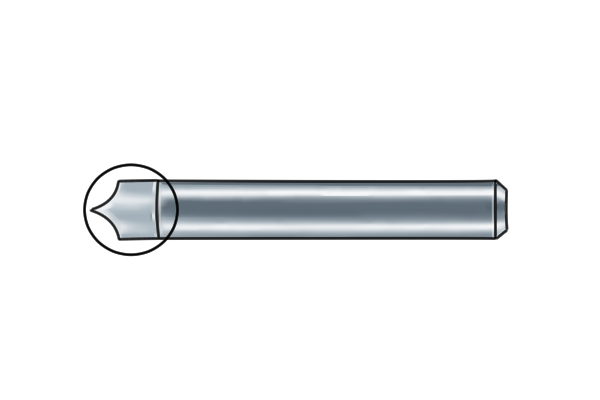 |
This tip will either be an extension of the cutting edges or will be ground on separately.
The steeper the angle of the tip, the easier that bit will be to plunge-cut. |
|||
Spiral bits |
||||
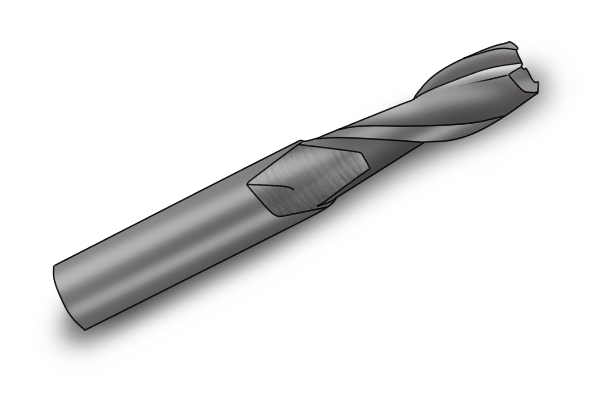 |
All spiral router bits are able to plunge-cut. |
|||
A cutting edge or edges running along the bottom of the bit |
||||
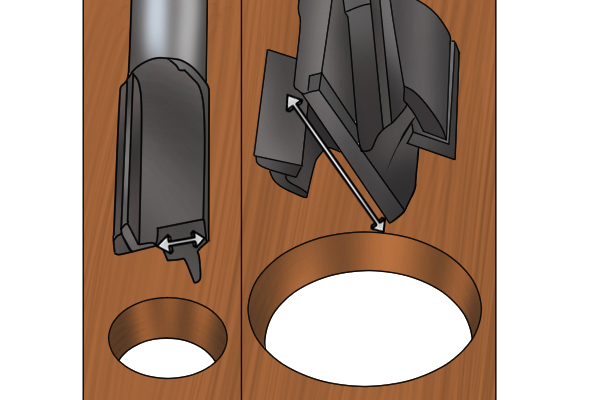 |
Cutting edges that extend half to all of the way across the base of the bit, will allow it to plunge cut.
|
|||
Bits that cannot plunge cut |
||||
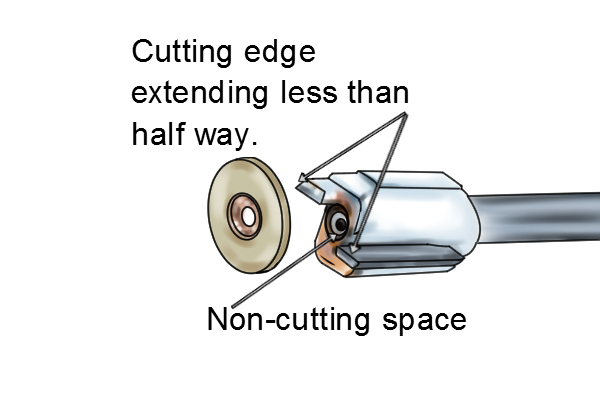 |
You may think the bit on the left could plunge-cut, as it has cutting edges on the base of the body; and you'd be partially right. Bits like this can cut into the material from above, but only to a certain depth, before the non-cutting portion of the base reaches the material, and simply spins against it.
The cutting edges on this bit do not extend fully across the base of the body, so they will only cut a sort of ‘ring’ because the base prevents the bit from plunging further into the material. |
|||
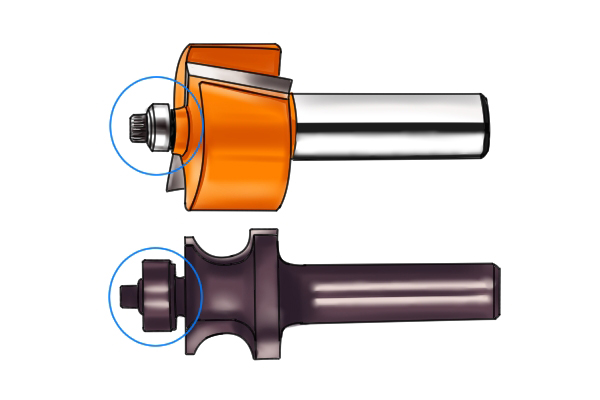 |
Bits with a guide pin or bearing underneath the body will not be able to plunge-cut.
Some bits have a guide pin or bearing positioned either above or below the body of the bit. These are often referred to as ‘pilot bits’. If the guide is located below the body, the bit will not be able to plunge-cut, because the guide is in the way, and is non-cutting.
These bits are designed to shape the edge of material instead. |
|||
 |
||||
Can a plunge-cuttingrouter bit be used inany type of router? |
||||
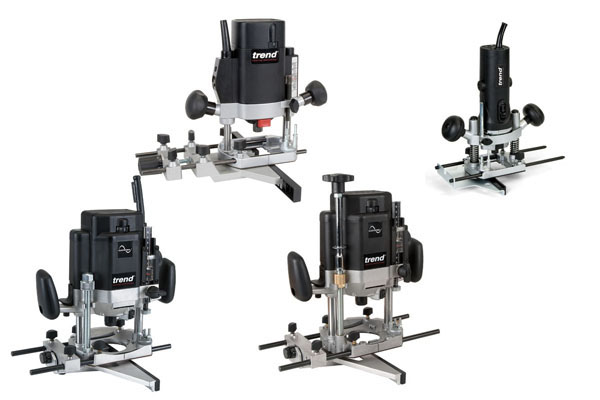 |
In theory, any router bit can fit in any router provided the router’s collet size matches the diameter of the router bit’s shank.
However, a plunge-cutting bit is designed to be used in a plunge router which uses a special spring mechanism to plunge the bit down into the material from above. All routers currently supplied by Trend has a plunge cut facility for extra versatility. |
|||
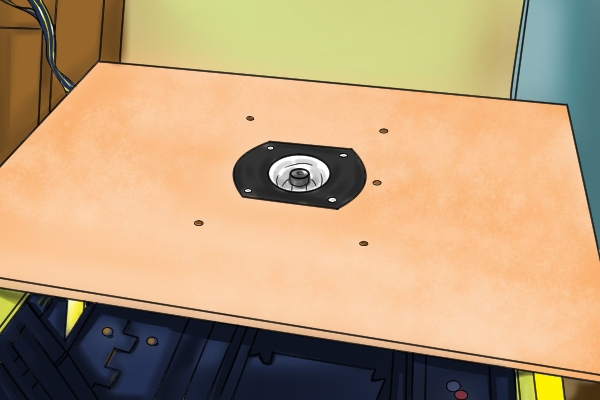 |
Using a plunge-cutting router bit on a router table and trying to lower the material down onto the bit from above is a difficult not to mention very dangerous task and should not be attempted! |
|||








